Handloads for Old 12 Gauges
How to Shoot Them Safely
feature By: John Barsness | April, 22
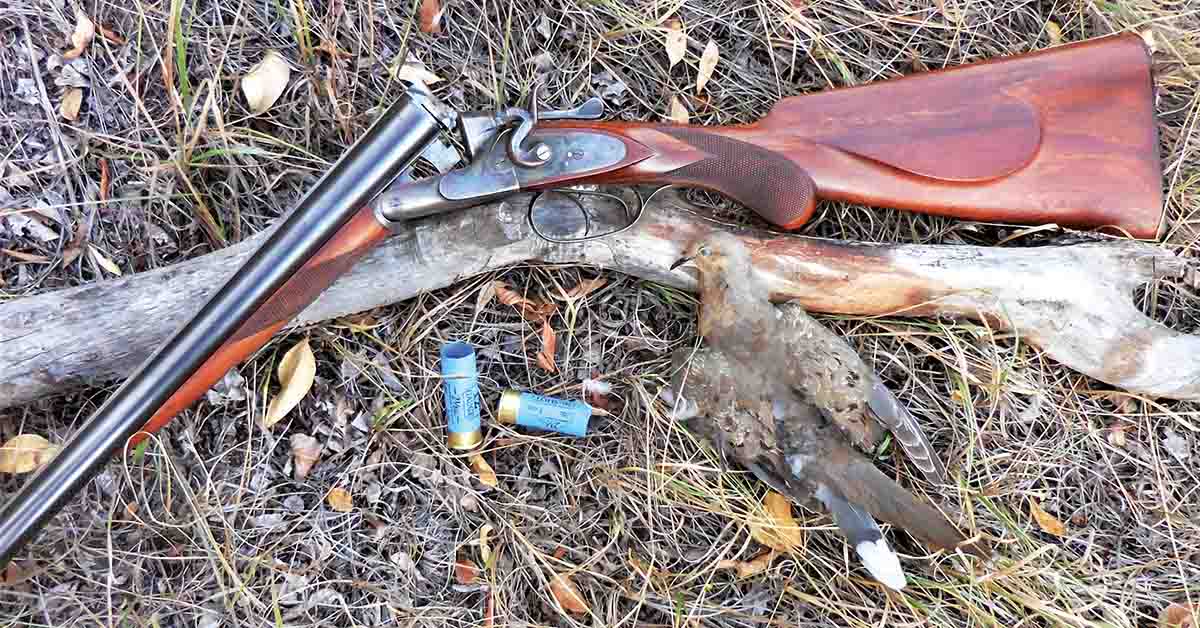
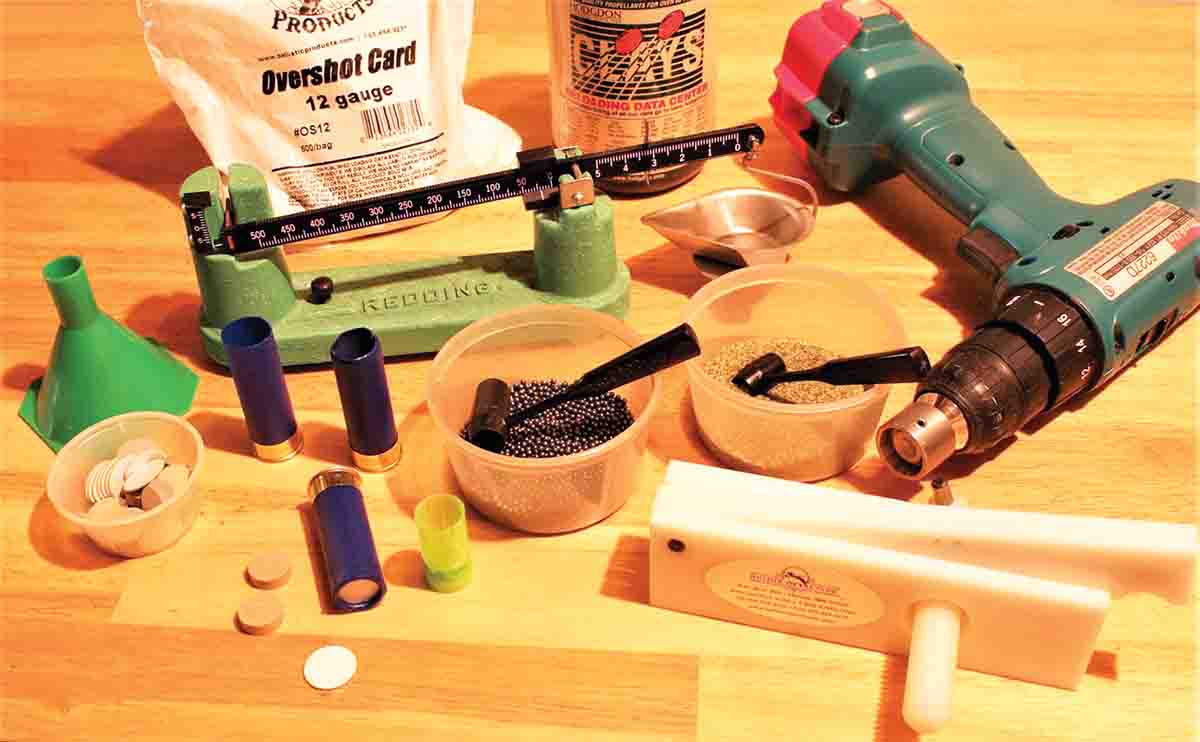
The name on the action was R. Lisle, a shop I had never heard of, but hundreds of small British gunmakers have come and gone. My eye looked right along the rib when I brought the gun to my shoulder, and it also passed the standard tests of action/barrel tightness and the solder between barrels and rib. The proof marks showed the gun had been tested with “nitro” (smokeless) powder and 11⁄8 ounces of shot. Sold!
An internet search revealed Robert Lisle had a shop in Derby, 20 miles northeast of Birmingham, from 1895 to 1930. Birmingham is the second-largest British city after London, and since 1700, a major center of British firearms manufacturing.
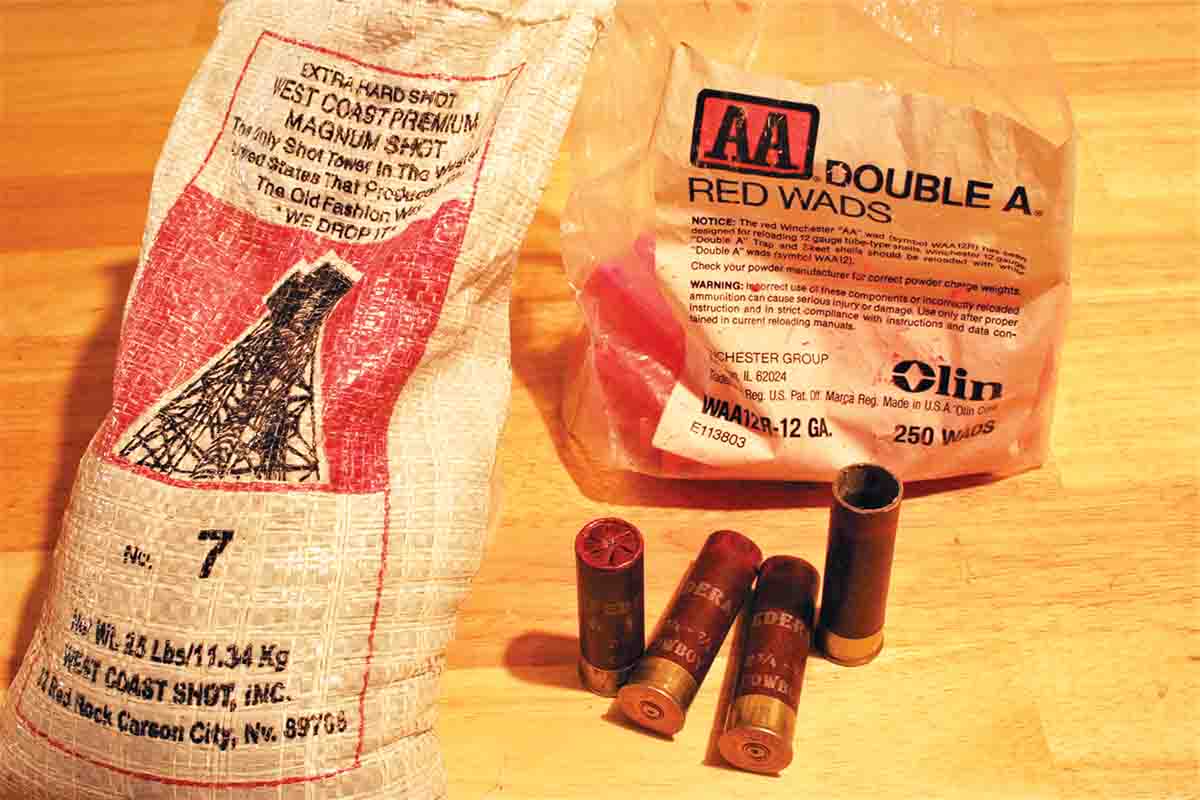
On an accurate scale, it weighed 6 pounds, 8 ounces. My Brownells gauge measured the shiny bores at .730 inch in diameter, suggesting they hadn’t been rehoned. The chokes measured .002 inch in the right barrel and .035 in the left, a fine combination for general hunting.
However, a Galazan gauge showed both chambers measured 2.75 inches. While some older British doubles had 2.75-inch chambers, they were normally heavier than the Lisle, so a gunsmith probably lengthened the chambers later. While Capital’s gunsmiths check out used guns, they hadn’t measured the chambers, because the owner firmly claimed they were 2.5 inches. The gun was still a bargain – but I still “needed” a 2.5-inch 12 gauge.
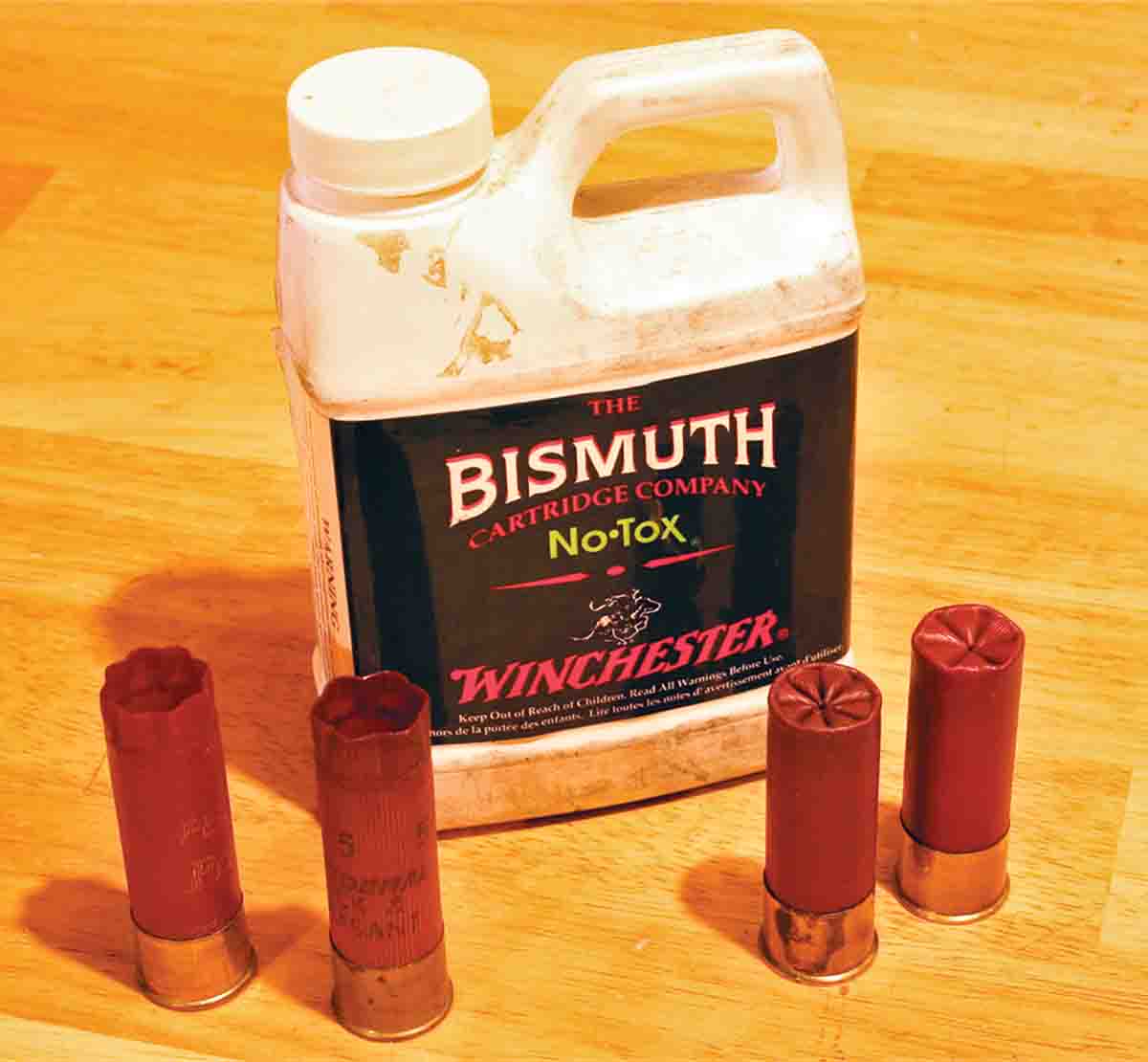
One showed up at Capital 11 months later, a lightweight J.P. Sauer hammer gun in excellent original condition. Both hammers could be simultaneously cocked with my right thumb, and the chambers were just slightly over 2.5 inches, because “short” European 12-gauge ammunition is 65mm long – 2.559 inches. For my purposes, this was close enough.
It weighed the same 6 pounds, 8 ounces, but the 28-inch barrels had tighter bores, not unusual in German shotguns, and the proof marks indicated they were original diameter. The chokes measured .012 and .035 inch, basic, modified and full. The only engraving was a perched falcon on each side plate, representing the model name – Falke, German for falcon. The serial number indicated it was made in 1911.
Six weeks later, I bought another British side by side from local Montanan Tom Roll, a W.W. Greener boxlock ejector with Damascus barrels, made in 1895. Two weeks prior, Tom had sold me a homebuilt .17 Ackley Hornet, because he and his wife were moving to a retirement home – and after getting acquainted, he knew l liked shotguns too.
His father had acquired the Greener long ago, with the chamber already 2.75 inches long. Tom said that when young and dumb, he shot it considerably with American “low brass” ammunition, then believed to be lower pressure than “high brass” ammunition. However, The Sporting Arms and Ammunition Manufacturers’ Institute (SAAMI) maximum pressure for all 2¾-inch, 12-gauge, lead-shot ammunition has long been the same, whether cases are low or high brass, today listed as 11,500 psi.
Despite this “abuse,” the Greener action remained tight. The shiny bores averaged .734 inch in diameter, very slightly larger than standard. They may have been honed, but such a tiny increase may have come from 125-plus years of shooting and cleaning.
The gun may have originally had 2.75-inch chambers, since W.W. Greener mentions them as ideal for live-pigeon guns in his classic book The Gun and its Development. It weighs a pound more than the Lisle and Sauer, with half the extra weight in the thick-walled, 28-inch barrels, and both chokes are very full, also indications of possibly being a pigeon gun.
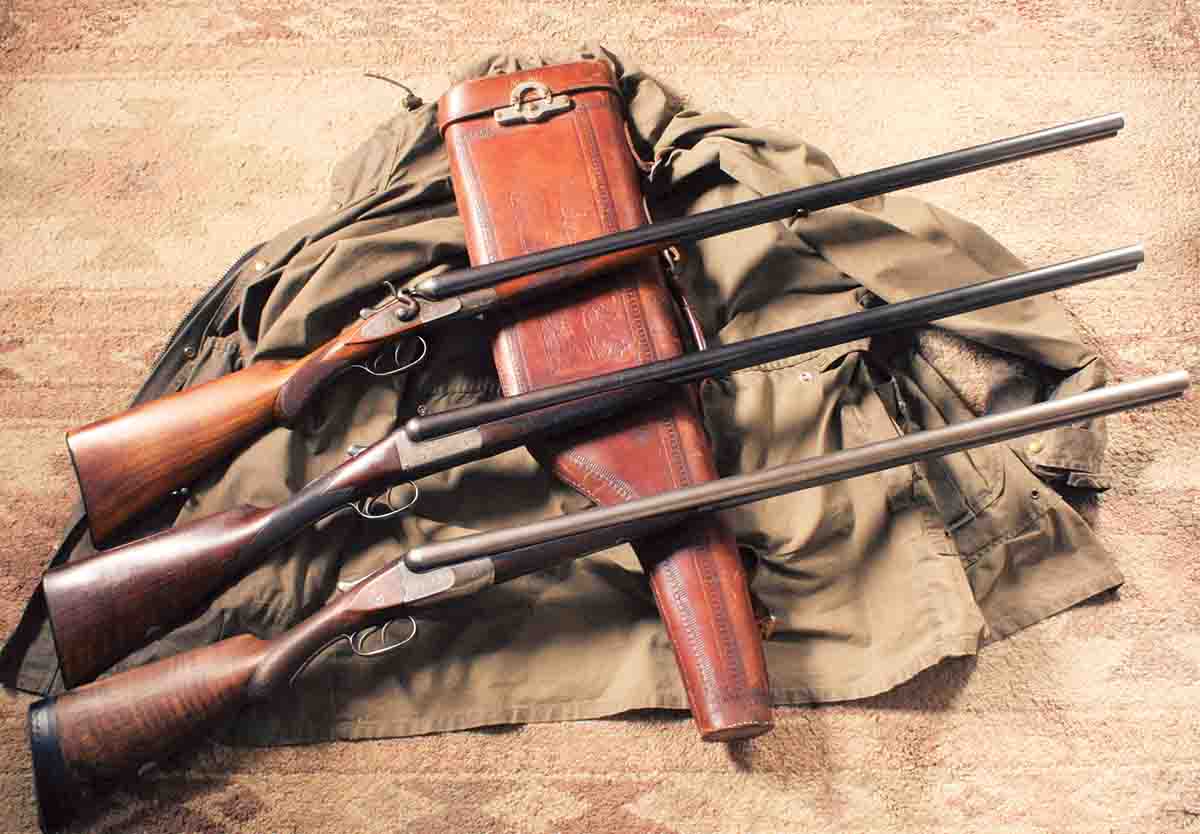
Though several companies offer suitable ammunition for such old shotguns, I prefer handloading to get exactly what I want, but before discussing my loads, I need to confront several myths about old shotguns and pressure. They could be called “old wives’ tales,” but they’re mostly “old guys’ tales.”
The oldest is that Damascus barreled shotguns should never be fired with “modern” ammunition. They were made by welding steel and iron “wire” into flat strips, and the strips were then wrapped and welded around a mandrel to make a barrel.
Many published “sources,” both printed and internet, firmly state Damascus barrels are extremely dangerous. One suggests that if someone shoots modern ammunition, the barrels often blow apart in front of the chamber. However, after the transition to fluid-steel barrels in the late 1800s – partly due to smokeless powder – many British and European Damascus-barreled shotguns were proof-tested with smokeless ammunition and worked fine.
American manufacturers generally quit using Damascus barrels before 1900, partly because they’ve never had a national proof house, and low-quality barrels sometimes burst. But in Britain, Damascus barrels were considered superior to early fluid-steel barrels, partly due to trials at the Birmingham proof house, and several companies made them into the 1930s. W.W. Greener ceased regular production of Damascus barrels and guns after 1903, but kept a supply of barrels, and still uses them on custom-ordered guns today.
An interesting Damascus test appeared in a 1999 issue of The Double Gun Journal (DGJ). Sherman Bell, the author, is an old-shotgun enthusiast, who started testing old guys’ tales with a strain gauge. He published a series of articles in DGJ, often involving Tom Armbrust, who owns a piezo-pressure research lab. They decided to shoot increasingly high-pressure loads until an old Damascus-barreled Parker came apart.
Most barrels are proof-fired with a single high-pressure cartridge, following the metallurgical principle that if the metal withstands a single severe stress test, it will withstand lots of normal stress. Proof loads generally produce at least 1.5 times the pressure of standard ammunition, which with U.S. 2.75-inch ammunition would be over 17,000 PSI.
Armbrust piezo-tested the handloads while assembling them. A strain gauge was attached to a Parker before the shooting, and its results were within around 100 psi of the piezo pressures. The gun was fired by the time-honored technique of tying it to a tire, then pulling the trigger with a long string. The action and barrels were frequently measured to look for changes.
The first pair of handloads produced pressures slightly higher than SAAMI standard, which the Parker easily handled. They then worked up to ammunition producing more than 18,000 psi, essentially “proof loads.” The Parker handled these too, though one brass case head swelled very slightly in front of the rim.
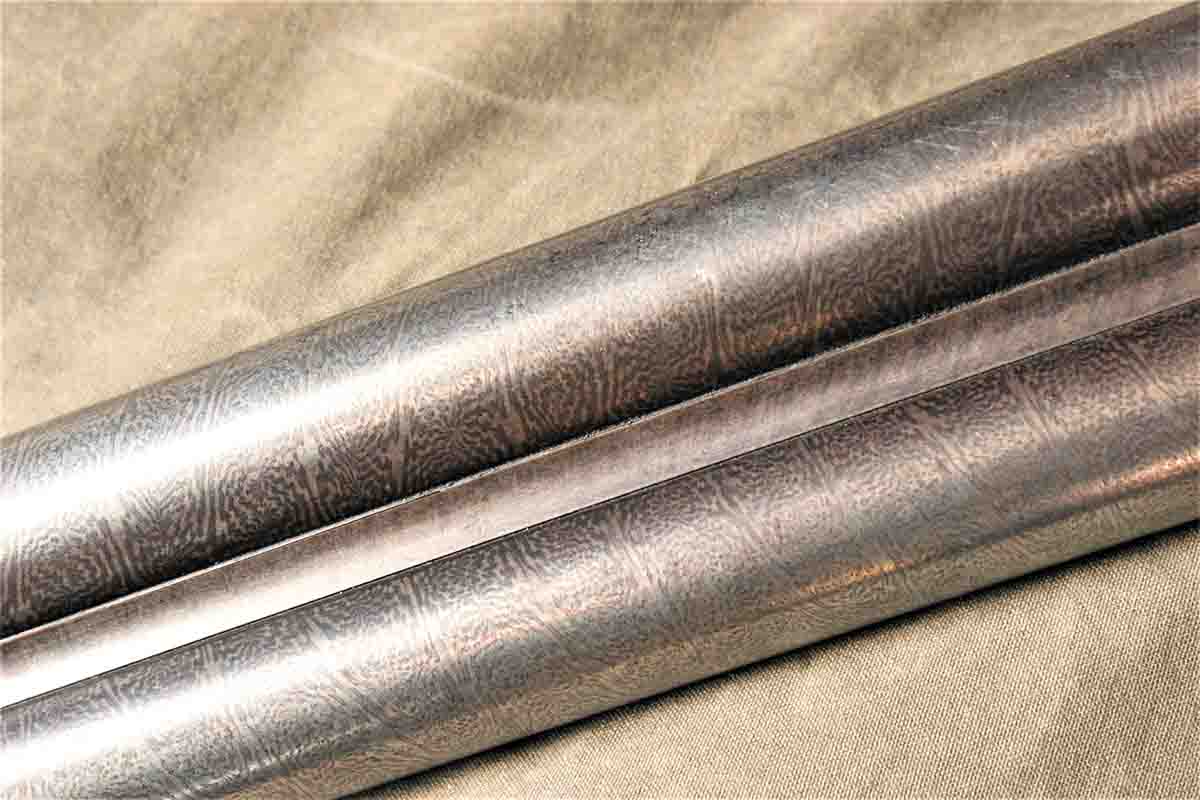
The shotgun continued handling hotter handloads, though at around 25,000 psi, the stamped lettering on the case heads flattened. With a load producing over 29,000 psi, the left barrel finally came apart – but instead of blowing in front of the chambers, the chamber split along its side, where it joined the right barrel.
They then fired the second 29,000 psi round in the right barrel, which stayed together. It finally blew with a round producing close to 32,000 psi, nearly three times SAAMI standard, again along the side of the chamber. The edges of the ruptured metal were solid and shiny, without the tiny flaw-holes that some claim are common in Damascus barrels.
Of course, one test does not prove all Damascus barrels will handle modern ammunition. Bell strongly advises that any old shotgun should be examined by a qualified gunsmith before shooting any ammunition – but the test does suggest blanket statements about Damascus barrels are not true.
The other major old guys’ myth is firing 2.75-inch crimped shells in 2.5-inch chambers is as dangerous as shooting Damascus barrels, supposedly because the crimp unfolds into the forcing cone, constricting the wad and raising pressure. One proponent was Sir Gerald Burrard, a famous British gun writer who, in his 1931 two-book treatise The Modern Gun, stated: “It is…distinctly dangerous to fire 2¾-inch, 12-bore cartridges in a gun chambered for the ordinary 2½-inch cases.”
This theory has been tested several times since, with both the original lead-crusher system of pressure measurement, and piezo transducers. The first major public contradiction came from another famous English writer, G.T. Garwood, who published as Gough Thomas. In 1964, he published an article in the British Shooting Times describing a test of 2.75-inch, 12-gauge Eley ammunition in both 2.5-inch and 2.75-inch pressure barrels. The resulting pressures averaged 2.63 British tons per square inch in the 2.5-inch barrel, and 2.65 tons in the 2.75-inch barrel. (British tons are 2,240 pounds, so these convert to 5,891 and 5,936 pounds per square inch. The difference is statistically insignificant.)
Twenty years ago, a friend at Winchester bought a Sauer 16-gauge side-by-side with 65mm chambers, and attached a strain gauge to see how much pressure Winchester 16-gauge, 2.75-inch ammunition developed in the short chambers. The SAAMI standard for 16-gauge shotshells is also 11,500 PSI, and they did not exceed that in the Sauer.
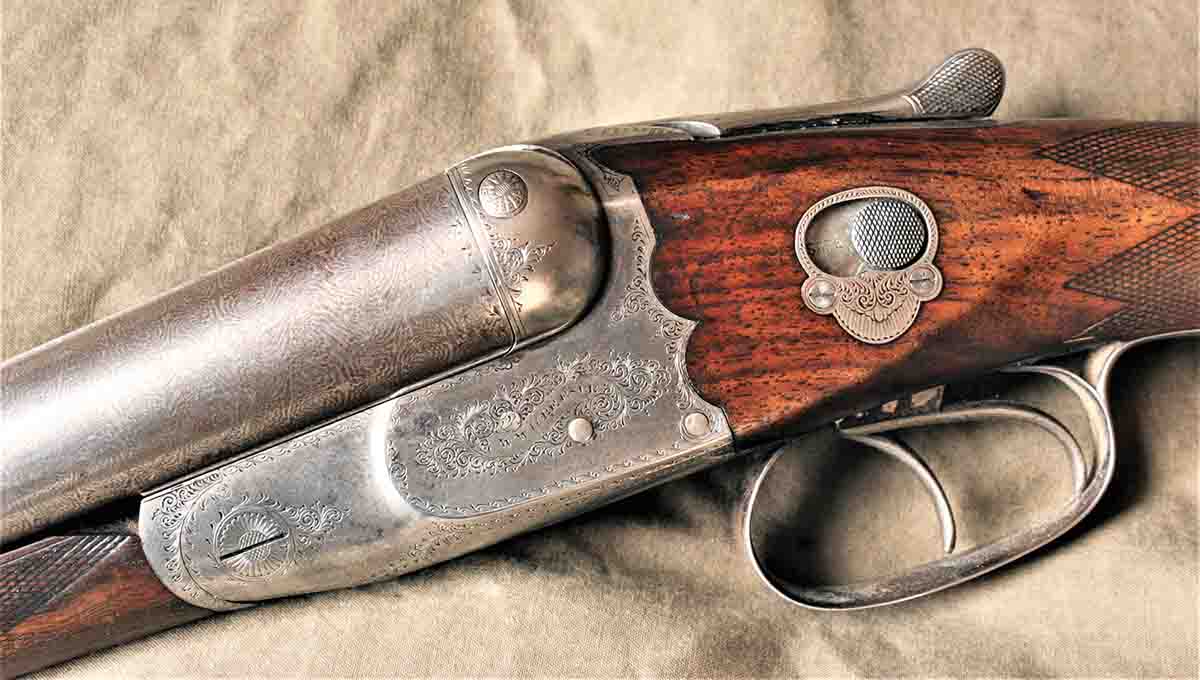
Instead, the real problem is firing modern 2.75-inch shells in guns designed for lower-pressure ammunition, in either 2.5- or 2.75-inch chambers. This can eventually loosen the action, and in fact, some British gunmakers suggest shotgun owners return theirs to the factory after every “shooting season,” to be checked and possibly tightened.
How lightly should we load hunting ammunition for old shotguns? This depends on both the gun and ambient temperature. Some American hunting, say southern dove shooting, takes place in hot weather, but here in Montana, late-season temperatures often drop well below freezing, and sometimes zero, resulting in lower pressure. A load producing 7,000 psi at 60/80 degrees Fahrenheit (SAAMI’s test-temperature range) may result in “squib” loads in real cold weather.
Luckily, these days far more “low pressure” shotshell loading data is available. Unluckily, right now, yet another buying panic has vastly reduced component availability – and as experienced shotshell handloaders know, ammunition should follow published data. This includes not only powder charges but specific cases, wads, primers and even type of shot.
I keep a lot of shotshell components on hand, but after searching pressure-tested data, my choices were very limited, both by my inventory and store availability, one reason I settled on four loads. Still, I got lucky with a previous load, chosen in 2001 for Eileen’s pair of 12-gauge British doubles. They kicked too much with typical higher-velocity American factory ammunition, so I tried a 1-ounce load featuring Federal’s paper shells, with a listed velocity of 1,200 fps. This produces 18 foot-pounds of recoil, tolerable during a typical day of grouse or pheasant hunting – and the pressure is also only 7,600 psi.
I have also experimented considerably with light loads in other gauges, resulting in “Why the 28-Gauge Works So Well” in Handloader No. 252 (April-May 2008). In the fall of 2007, I decided to hunt upland birds only with the 28 gauge, to define its limitations – which were never found on birds from doves to sage grouse. My favorite pheasant handload turned out to be 7⁄8 ounces of extra-hard No. 7 shot, which cleanly killed wild roosters at 40 yards. This occurred partly because the 28 produces in a very short shot-string, so more pellets hit a flying bird at the same time, especially on crossing shots.
No. 7 shot is uncommon in America, but fills our biggest gap in common sizes, between No. 7½ (nominally .09-inch diameter and 350 pellets per ounce) and No. 6 (.11 inch, 225 per ounce). Lead No. 7 measures .095 inch, with 300 per ounce, but my batch went 290. This means a 7⁄8-ounce load averages 254 pellets, similar to 11⁄8 ounce of No. 6, providing plenty of pattern density for wild roosters.
During autumn of 2021, my three old 12s took wild roosters with all four listed loads, using lead No. 7s and Bismuth No. 6s. The longest shot was close to 50 yards, made with the full-choke barrel of the Lisle using the paper- shell load and an ounce of No. 7s – which contains about as many pellets as 1¼ ounces of lead No. 6. The bird flushed near the edge of a wheat field, flying into the upper branches of a shelterbelt of 30-foot trees. It tumbled through the branches to the ground, dead in the air – where Lena the Labrador happily grabbed it.
This load works well partly due the same reason the 28 gauge works so well – a short shot-string, an effect enhanced by the larger 12-gauge bore. Plus, harder shot penetrates better: Extra-hard No. 7s normally penetrate as deeply as the softer No. 6 shot in “affordable” factory loads.
The Bismuth load was developed mostly for the Greener, when ducks might be part of the bag later in the season, but also worked in the Lisle. The 8,500 psi pressure worked well in temperatures as low as the teens.
I decided to use 2.5-inch handloads in the Sauer, despite 2.75-inch, low-pressure loads being safe, to prevent loosening the slender action. This was accomplished by cutting down new 2.75-inch primed Rio shells with a Trim Doctor II from Ballistic Products – which also supplied the 12-gauge roll-crimping tool used with an electric drill. When spun down onto the mouth of a plastic case, it friction-softens the plastic and curls it around a thin “overshot card.” This load duplicates my 28-gauge pheasant handload. (Ballistic Products’ Grant Fackler also provided some plastic wads, and good advice.)
The single component change made was substituting a pair of .22-inch thick fiber 20-gauge wads from the original Herter’s company for the single 18FW20 wad listed in BP’s 8th edition of Advantages, their main loading manual. Unfortunately, the single wads were sold out.
Montana’s upland season, for all birds except pheasants, opens on September 1, but the weather was very hot and dry, thanks to the western drought. Normally, I hunt mountain grouse in September, but most Forest Service roads were closed due to fire danger. Instead, I hunted mourning doves and Hungarian partridge in the valley, starting with the Sauer Falke.
The drought and heat also resulted in the worst Hun hatch in 30 years – but allowed doves to stick around long after they normally head south, and the Sauer took quite a few. In contrast, the pheasant hatch was above average, and after the season opened in October, I dropped roosters with all three guns.
At the time this was written, there were still two weeks left in the upland season, and a month of duck season. There was still time to take my old guns hunting some more.


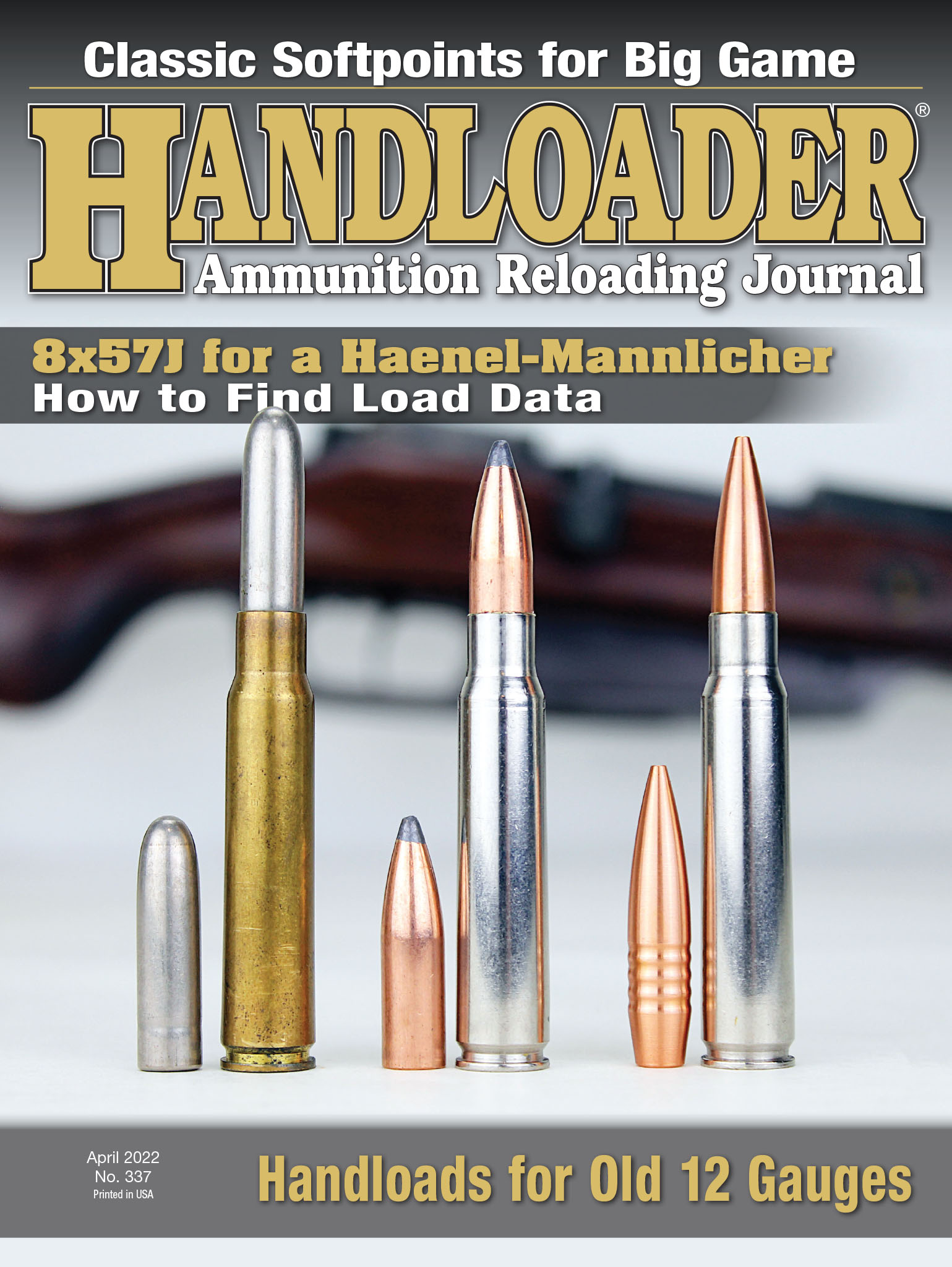
.jpg)